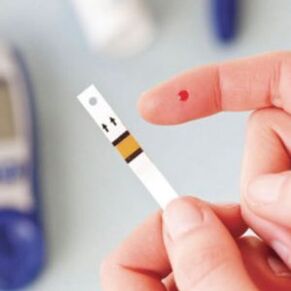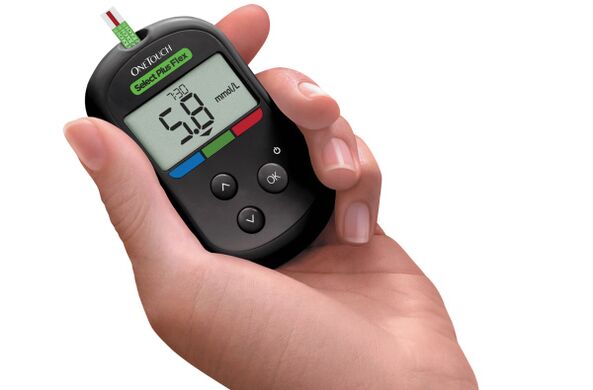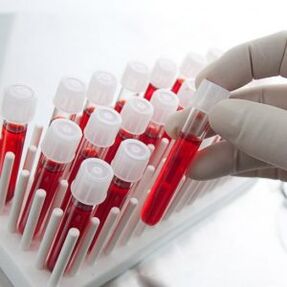





In the early stages, there is no practical complication of the clinic and with the development of encephalopathy, the symptoms begin to appear more clearly. The symptoms are identical to both types of diabetes. The frequent diabetes satellite is atherosclerosis, arterial hypertension and obesity. In relation to the pride of blood vessels in the event of atherosclerosis, the risk of ischemic stroke and heart attacks increases. In the event of a violation of microcirculation in the kidney vessels, an irreversible renal failure occurs, which eventually leads to a complete cessation of kidney function. This, in turn, leads to the need to treat renal failure by the lifelong dialysis method. Diabetic coma Diabetic cat means severe damage to metabolic processes in the body of a patient suffering from diabetes. A coma can occur both with a strong increase and a strong decrease in human blood sugar. This condition requires urgent medical care, since, in its absence, serious complications and even deaths are possible. A coma gradually develops, but quite quickly. The first sign of the conflict in which it can be a state of fiction, the rapid growth of blood sugar, nausea and vomiting, drowsiness, abdominal pain on the day or more before the direct coma. Another symptom of diabetic coma may be the intense smell of acetone from the patient's mouth. Sensitivity can also occur in convulsions, thirst, thirst. With a hypoglycaemic coma, the concentration of blood sugar decreases abruptly. The index can reach the mark of 2, 5 mmol per liter and below. Among the obvious symptoms of such a coma, irrational anxiety, fear of the patient, a sense of weakness, cramps, blood pressure falls and loss of consciousness stand out. The precursors of the appearance of an hypoglycaemic coma may be: General hardship; Anorexia? diarrhea or constipation; Dizziness, headaches, tachycardia. Lack of assistance in this state can lead to extremely serious consequences. Since hypoglycaemic coma grows quickly, the help provided should be urgent. A sharp decrease in blood pressure in the patient, the weakening of the pulse and the softness of the eyes may indicate a sharp decrease in blood pressure. Only a specialized doctor can bring a person to his senses in this state, so the ambulance must be followed as soon as possible. Laboratory signals You can reliably learn the diagnosis of the patient only after all the necessary laboratory tests. Any laboratory tests for diabetes are intended to determine blood glucose markers. It is possible to detect random sugar in the blood with mass tests of one person prior to hospitalization or by emergency identification of other indicators. The most common is a blood test for sugar, on an empty stomach. Before delivering it, nothing can be consumed for 8-12 hours. Also, you can't drink alcohol and you can't smoke an hour before blood donation. The level of up to 5, 5 mmol per liter will be considered as a normal indicator. If the index is equal to 7 mmol per liter, the patient will be sent for additional examination. For this purpose, they are tested for glucose tolerance. For this reason, the patient gives blood on an empty stomach, then drinks a glass of sugar with sugar (75 grams for an adult for 200 milliliters) and 2 hours after it discovers a blood test. If the body is in normal condition, then the first analysis will show the effect of up to 5, 5 mmol per liter and the second - up to 7, 8 mmol per liter. If the indicators are in the area, respectively, 5. 5-6. 7 and 7. 8-11. 1 mmol per liter, then this will tell doctors about the development of pre-reversal to the patient. Indicators in excess of these numbers indicate diabetes. It is also common to conduct a study on glycosque hemoglobin, demonstrating the average value of human glucose in the last 3 months of life. The rule is the index below 5, 7%. If the value is between 5, 7-6, 4%, then this suggests that there is a risk of type 2 diabetes. In this case, measures should be discussed with the doctor to reduce this risk. If the level of glycosarized hemoglobin is more than 6, 5%, diabetes is likely, but requires confirmation. The recommended level of glycosylated hemoglobin in people with diabetes is less than 7%, if this level is higher, it is necessary to discuss the condition with your treating physician. It should be borne in mind that the level of glycosquene hemoglobin above 7% can be assessed by the doctor as optimal. Symptoms of a child Diabetes can occur at any age, including early children. Even newborn diabetes is. This is a rare case of innate nature of the disease. Most of the time, the event in children represents 6-12 years. Metabolic processes in children during this period go much faster and the condition of the uninhabited nervous system can affect the level of blood glucose. The younger the baby is, the more complicated the diabetes. Among the main symptoms that parents need to pay attention to not to lose the development of diabetes in children, doctors distinguish: thirst and dry mouth. nausea with vomiting. Frequent urine adhesive urination. Weight loss and high appetite at the same time. a fall in visual acuity. High fatigue, weakness and irritability. If a child has at least one of the above symptoms, this is one reason to search for a doctor. If many symptoms are identified, at the same time, a doctor should be immediate. Also, among the symptoms in children, formal and informal signs of diabetes may occur. Doctors attribute to the typical symptoms that children's parents often confuse an age associated with urinary incontinence, polydam, polyphagic, dryness and itching, itching of the genitals after urination, the amount of blood is more than 5 per liter. Early diagnosis in the event of suspicion will help detect the disease at an early stage and begin the necessary treatment, which will not allow the development of complications. Determination of diabetes mellitus at home The course of diabetes can be completely asymptomatic. It can be randomly identified when you visit a optometrist or any other doctor. However, there are many signs with which the presence of pathology can guess independently. In addition, at home, you can accurately create the type of disease. With a healthy body, after eating blood, sugar levels increase. After 2-3 hours after that, this index must return to its original limits. If this does not happen then a person has many symptoms that cannot be observed. This is already considered dry mouth, thirst, very frequent and abundant urination, increased appetite, apathy, cramps, consciousness nebulae. Gradually, a person begins to observe the dryness of the skin, which has not previously occurred. Also at home, you can suspect the appearance of diabetes in various strange senses that a person has not previously noticed. In the second type of diabetes, this is poor healing of wounds and scratches, the development of obesity. In the first type of pathology, a person, on the other hand, may lose strong weight, although the appetite is quite high. Also, with all types of diseases, itching of the skin can occur, increased hair growth, xanth formation (small yellow skin growth), hair loss in the extremities and more. Early identification of diabetes should cause a doctor. Only if you start treatment for diabetes in the early stages, can we hope for compensation for illness and normal quality of life in the future.


























